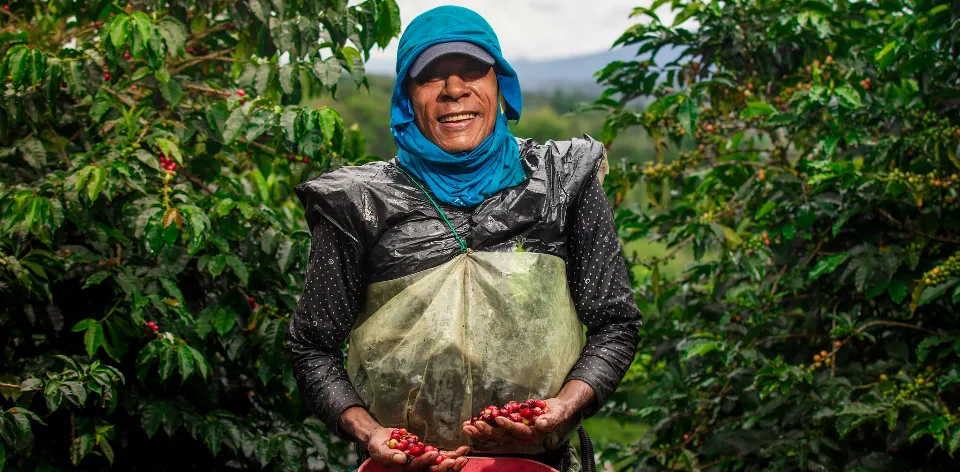 2/4/2024
2/4/2024
About 549,000 coffee-growing families produce more than 10.6 million sacks of coffee each year in Colombia

Bogotá D. C., (@Minagricultura, @UPRAColombia, @claudialili76). The coffee chain is one of Colombia's most representative, not only for its economic relevance but also for its cultural and social connection. This productive system extends from agricultural activities on the farm, through processing and commercialization processes, to reach the final consumer, both in the domestic and international markets.
According to the suitability zoning by the Rural Agricultural Planning Unit (UPRA), Colombia has approximately 6.2 million hectares suitable for coffee production, equivalent to 5.4% of the continental national area. The departments with the highest suitability for cultivation are Antioquia, Cauca, Huila, Tolima, and Santander, and among the main municipalities are El Tambo, Cauca (80,592 ha), La Plata, Huila (54,461 ha); Pitalito, Huila (47,756 ha); Cajibío, Cauca (47,526 ha); and Ituango, Antioquia (44,435 ha).
"The suitability zoning is work developed by UPRA that allows identifying the potential, at a national level, of the activity; in this way, we strengthen planning exercises and provide tools to guide investments from both the public and private sectors around these chains. Coffee is one of the great protagonists of Colombian agriculture and, with this information, we provide inputs to producers and different sectoral actors for decision-making that allows the sustainable development of the productive chain in the long term," said Claudia Cortés, director of the entity.
Colombian coffee is produced in 603 municipalities distributed in 22 departments, with more than 549,000 families involved in cultivation; currently, small producers, with less than five hectares, represent 96% of the total and are responsible for 60% of the national production. For 2023, the total production in the country was equivalent to 10.6 million sacks. Although there was a decline compared to previous years, this phenomenon responds to various variables in the national and international markets, especially the high costs of inputs for production.
In the commercial link of the chain, there is a variety of local buyers, from parchment buyers who buy directly on the farm to buyers from different exporting companies. Similarly, there are 32 coffee growers' cooperatives that provide purchasing points close to the coffee grower and seek to transfer the highest possible value to them in exchanges.
Regarding the transformation of the national product, this is carried out physically by converting dry parchment coffee into green coffee. This process is mainly carried out in coffee mills located in the most important coffee municipalities in the country. Additionally, this link in the chain also houses coffee roasters and freeze-dried coffee factories. Here, coffee undergoes specific processes that give it the required characteristics and quality for its final consumption, either as roasted beans or in other presentations.
Learn about the different phases of coffee production.
Agricultural activities and production phases:
- The coffee chain starts with essential agricultural activities such as planting, harvesting, processing, and drying.
- During these processes, coffee goes through various phases: from wet parchment coffee, through wet parchment, until it reaches dry parchment, which constitutes the final product of this stage.
Transformation and commercialization:
- After the drying phase, dry parchment coffee is transported to milling facilities, where it is peeled and converted into green coffee.
- In Colombia, most of this green coffee is destined for export. However, for domestic consumption, coffee undergoes processes of roasting, grinding, and packaging, resulting in ground coffee of different types: caffeinated, decaffeinated, and mixed with sugar, among others.
Industrial use and derivatives:
- In addition to its direct consumption, coffee is used as an input in the industry.
The coffee bean undergoes a specific process to extract caffeine, which is used in refreshing beverage and pharmaceutical companies; this application represents a smaller proportion compared to direct consumption and does not involve the roasting process.

